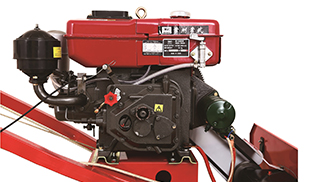ಡಿಸೆ . 15, 2024 10:19 Back to list
how to deglaze brake drums
How to Deglaze Brake Drums A Step-by-Step Guide
Brake drums are a crucial component of your vehicle’s braking system. Over time, they can accumulate a layer of glaze—a shiny, hardened surface that can negatively affect braking performance. When you apply the brakes, these glazed drums can lead to reduced friction, longer stopping distances, and unpleasant sounds. To maintain your safety and the efficiency of your vehicle, it is important to regularly inspect and, if necessary, deglaze your brake drums. This article will guide you through a step-by-step process to deglaze brake drums effectively.
Step 1 Gather Necessary Tools and Materials
Before diving into the deglazing process, make sure you have the required tools and materials on hand. Here’s what you will need
- Jack and jack stands - Lug wrench - Brake drum puller - Brake cleaner - Sandpaper or a brake drum hone - A wire brush or steel wool - Safety goggles - Gloves - A vacuum or compressed air
Step 2 Prepare Your Vehicle
1. Park on a Level Surface Ensure your vehicle is parked on a flat, stable surface. Engage the parking brake to prevent any unintended movement. 2. Loosen Lug Nuts Using the lug wrench, slightly loosen the lug nuts on the wheel of the brake drum you plan to work on, but do not completely remove them yet. 3. Raise the Vehicle Utilize a jack to lift the vehicle and secure it with jack stands. Always follow safety protocols when working under a vehicle.
Step 3 Remove the Wheel and Brake Drum
1. Remove the Wheel Once the vehicle is securely elevated, remove the previously loosened lug nuts and take off the wheel. 2. Remove the Brake Drum Depending on your vehicle’s model, you may have to remove additional components to access the brake drum. Use a brake drum puller if the drum is stuck. Be cautious and follow the manufacturer’s guidelines for removing the drum.
Step 4 Inspect the Brake Drum
how to deglaze brake drums

With the drum removed, inspect it for any noticeable wear, cracks, or significant damage. If the drum is excessively worn, it may be necessary to replace it rather than deglaze it. However, if the drum appears to be in good shape, you can proceed with the deglazing.
Step 5 Deglaze the Brake Drum
1. Cleaning Start by cleaning the brake drum with a brake cleaner to remove dust, grease, and debris. This will provide a clean surface for better deglazing results. 2. Sand the Drum Use sandpaper or a brake drum hone to sand down the glazed surface. If using sandpaper, a medium grit (around 120-180) should work well. Always sand evenly and in a circular motion to avoid creating uneven surfaces. A brake drum hone can also be effective for restoring the drum’s surface. 3. Remove Dust After sanding, there will be a residue of dust. Use a vacuum or compressed air to clear away all the debris from sanding. Make sure the surface is clean for proper brake pad contamination.
Step 6 Reassemble and Test
1. Reattach the Drum Place the brake drum back onto its hub and ensure it fits snugly. 2. Replace the Wheel Put the wheel back on, hand-tightening the lug nuts first before lowering the vehicle. 3. Secure the Vehicle Lower the vehicle back to the ground and then use the lug wrench to securely tighten the lug nuts in a criss-cross pattern.
Step 7 Test Drive
Once everything is reassembled, take your vehicle for a test drive. You will want to use the brakes gently at first to allow the new surface to mesh with the brake pads. Listen for any unusual noises and pay attention to how the brakes feel.
Conclusion
Deglazing brake drums is a vital maintenance task that can enhance your vehicle’s braking performance. By following these steps, you can effectively deglaze your brake drums and contribute to your vehicle's safety and reliability. Always remember, if you feel unsure at any point during the process, consulting a professional mechanic is advisable to ensure the integrity of your brake system. Regular maintenance is key to safe driving, and being proactive about your vehicle's needs is an important part of being a responsible car owner.
-
Iveco Brake Drum | Premium OE Quality for Daily & Eurocargo
NewsAug.22,2025
-
Your Brake Drum Man: Quality & Performance Parts
NewsAug.21,2025
-
Explore Japan: Ultimate Travel Guide & Authentic Experiences
NewsAug.19,2025
-
Your Brake Drum Man: Premium & Reliable Brake Drums for Sale
NewsAug.18,2025
-
ROR Web Development: Build Fast, Scalable, Secure Apps
NewsAug.17,2025
-
Scania Brake Drums: OEM Quality for Optimal Safety & Durability
NewsAug.16,2025
